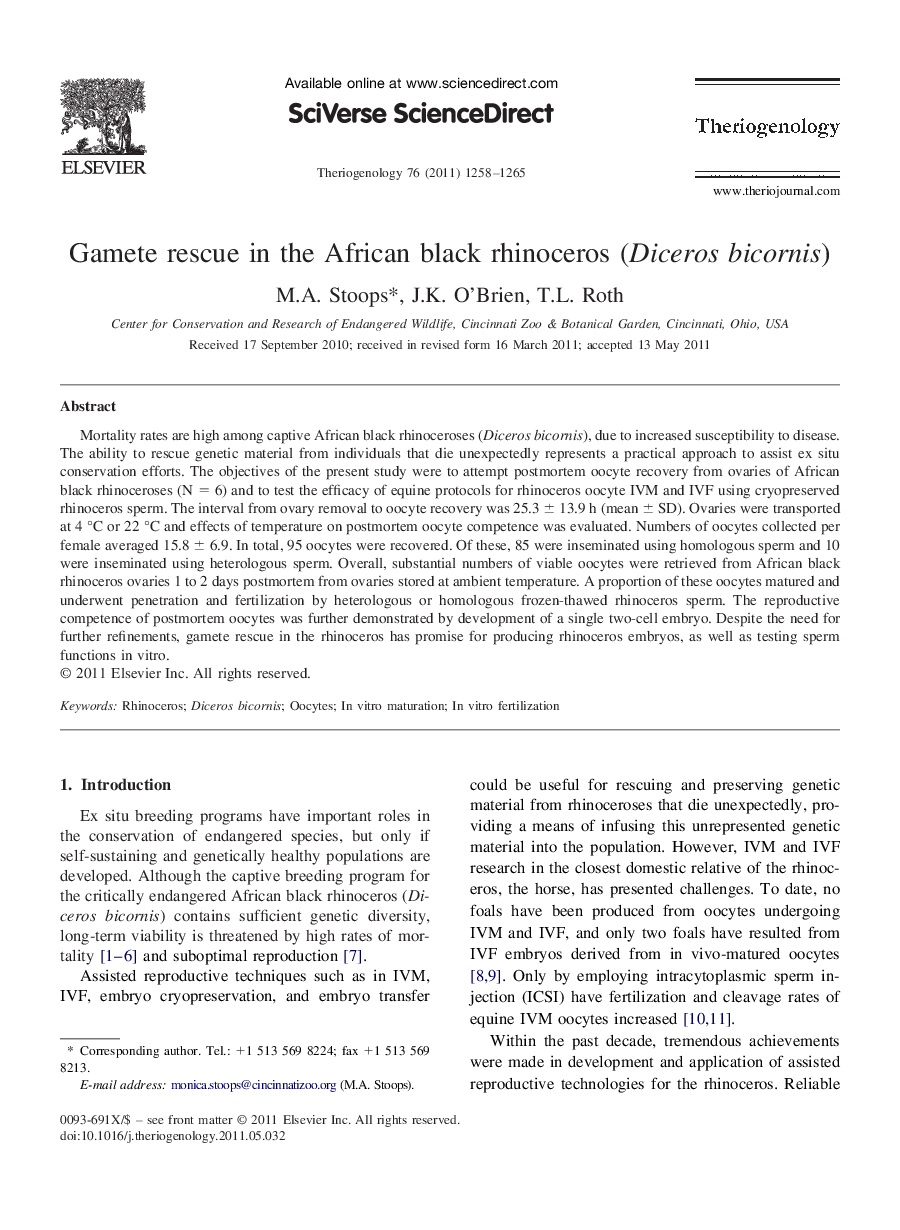| Article ID | Journal | Published Year | Pages | File Type |
|---|---|---|---|---|
| 10894550 | Theriogenology | 2011 | 8 Pages |
Abstract
Mortality rates are high among captive African black rhinoceroses (Diceros bicornis), due to increased susceptibility to disease. The ability to rescue genetic material from individuals that die unexpectedly represents a practical approach to assist ex situ conservation efforts. The objectives of the present study were to attempt postmortem oocyte recovery from ovaries of African black rhinoceroses (N = 6) and to test the efficacy of equine protocols for rhinoceros oocyte IVM and IVF using cryopreserved rhinoceros sperm. The interval from ovary removal to oocyte recovery was 25.3 ± 13.9 h (mean ± SD). Ovaries were transported at 4 °C or 22 °C and effects of temperature on postmortem oocyte competence was evaluated. Numbers of oocytes collected per female averaged 15.8 ± 6.9. In total, 95 oocytes were recovered. Of these, 85 were inseminated using homologous sperm and 10 were inseminated using heterologous sperm. Overall, substantial numbers of viable oocytes were retrieved from African black rhinoceros ovaries 1 to 2 days postmortem from ovaries stored at ambient temperature. A proportion of these oocytes matured and underwent penetration and fertilization by heterologous or homologous frozen-thawed rhinoceros sperm. The reproductive competence of postmortem oocytes was further demonstrated by development of a single two-cell embryo. Despite the need for further refinements, gamete rescue in the rhinoceros has promise for producing rhinoceros embryos, as well as testing sperm functions in vitro.
Related Topics
Life Sciences
Agricultural and Biological Sciences
Animal Science and Zoology
Authors
M.A. Stoops, J.K. O'Brien, T.L. Roth,
